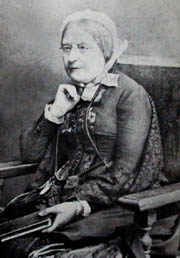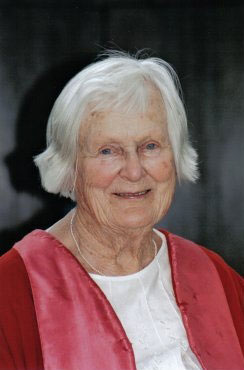
Bedford College was founded in London in 1849 as the first higher education college for women in the United Kingdom. In 1900, it became a constituent of the University of London. Having played a leading role in the advancement of women in higher education and public life in general, it became fully coeducational in the 1960s. In 1985, Bedford College merged with Royal Holloway College, another constituent of the University of London, to form Royal Holloway and Bedford New College. This remains the official name, but it is commonly called Royal Holloway, University of London (RHUL).

The Girls' Day School Trust (GDST) is a group of 25 independent schools, including two academies, in England and Wales, catering for girls aged 3 to 18. It is the largest group of independent schools in the UK, and educates 20,000 girls each year. It was formed in 1872 to provide affordable day-school (non-boarding) education for girls as The Girls' Public Day School Company (1872–1905), then The Girls' Public Day School Trust (1906–1998).
Emily Anne Eliza Shirreff was a pioneer in the movement for the higher education of women and the development of the Froebelian principles in England.

Elizabeth Phillips Hughes MBE was a Welsh scholar, teacher, and promoter of women's education, first principal of the Cambridge Training College for Women.
Froebel College is one of the four constituent colleges of the University of Roehampton.

William Hobson Mills FRS was a British organic chemist.

Maria Georgina Grey, also known as Mrs William Grey, was a British educationist and writer who promoted women's education and was one of the founders of the organisation that became the Girls' Day School Trust. The college she founded was named in her honour the Maria Grey Training College.

Dame Alice Rosemary Murray, was an English chemist and educator. She was instrumental in establishing New Hall, Cambridge, now Murray Edwards College, Cambridge, and was the first woman to hold the office of Vice-Chancellor of the University of Cambridge.
Julian Marshall was an English music and print collector, tennis player and writer.

Ida Freund was the first woman to be a university chemistry lecturer in the United Kingdom. She is known for her influence on science teaching, particularly the teaching of women and girls. She wrote two key chemistry textbooks and invented the idea of baking periodic table cupcakes, as well as inventing a gas measuring tube, which was named after her.

Lucy Everest Boole FRIC was a British chemist and pharmacist who was the first woman to research pharmacy in England. She was the first female professor at the London School of Medicine for Women in the Royal Free Hospital, and the first female Fellow of the Royal Institute of Chemistry.

Grace Coleridge Frankland known as Mrs Percy FranklandnéeGrace Toynbee was an English microbiologist. She was one of the nineteen female scientists who wrote the 1904 petition to the Chemical Society to request that they should create some female fellows of the society.

Lilian Mary Faithfull CBE was an English teacher, headmistress, women's rights advocate, magistrate, social worker, and humanitarian. She was one of the "Steamboat ladies" who were part of the struggle for women to gain university education.
Mildred May Gostling, also published under her married name Mildred Mills, was an English chemist who completed research in carbohydrate chemistry. She was one of the nineteen signatories on a letter from professional female chemists to the Chemical Society requesting that women be accepted as Fellows to the Society.
Alice Emily Smith was a British chemist and one of the nineteen signatories of the 1904 petition to the Chemical Society.

Alice Woods or Alice Augusta Woods was a British educationist and college head. She was an advocate for co-education.
Mary Walker was a Scottish teacher who was the founding head of the first Scottish teacher training college and the head of the first Scottish day school, St. George's High School for Girls to teach girls to pass university entrance exams.

Emilie Louise Michaelis (1834–1904) was German-born pioneer of the kindergarten system in England, and a translator, editor, and promoter of Froebel's writings. In 1875, she started one of the first English kindergartens in Croydon, London, and later a training college for teachers, which became Froebel College. She was described as the 'chief exponent of Froebelianism in England' and coined the phrase 'nursery school' in translation from Froebel.

Arthur Sidgwick (1840–1920) was an English classical scholar who had an early career as a schoolteacher. Despite his self-deprecating remark "in erudition I am naught", he is considered a great teacher of ancient Greek poetry. He also became an important figure in the advancement of female education at the University of Oxford.













